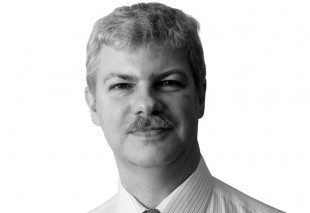

Jebel Sifah forges ahead

Viability director Guy Wilkinson reports from Oman, where the Muriya Tourism Company’s sustainable tourism development is set to put rural village Jebel Sifah firmly on the map
Muscat’s hotel sector seems to have largely avoided the ‘boom and bust’ syndrome that has afflicted cities in places such as the UAE. Certainly, a lot of new hotels have opened over the past few years, but the pace of development has been relatively sedate and in the context of the recession, this has been an advantage. The only ‘mega’ tourism real estate project to have really got going there has been The Wave, on the beachfront near the airport in Seeb, where the seventh tranche of several hundred houses has recently been well-received by the market, and Fairmont and Kempinski hotels are planned to open by 2012 and 2013 respectively.
Other large projects, however, have fallen by the wayside. Work on Salam Yiti, the huge 4.2km² tourism and residential development planned by Sama Dubai with Oman’s state tourism developer Omran, over the craggy hill from the Shangri-La Resort, has been stopped pending discussions between the governments of Dubai and Oman, although some impressive progress has been made in terms of road-building and marine earthworks. The nearby Yenkit Tourism Development, a planned 950-hectare hill-top project part-owned by Majid Al Futtaim offering four five-star hotels and an 18-hole Gary Player golf course, still has a web site, but construction seems unlikely to start in the near future.
Part of the challenge in these mountain sites to the immediate east of Muscat is surely to flatten out the jaggedly rocky terrain enough to build on. Local developer the Alargan Towell Investment Co has responded by creating an impressive double rock terrace along two sides of a small bay at Kheiran, just beneath Yenkit Heights, where they are planning what will eventually become a most dramatic 82-room Oberoi boutique hotel. I have seen this project and can vouch for its slow but apparently inexorable progress. The website promises operations will commence in 2011.
Muriya’s marina town
Most impressive of all the ongoing projects, however, is the Muriya Tourism Company’s Jebel Sifah development. Located 45 kilometres from Muscat at the end of what is currently a dangerously winding rural road, the 6.2km² residential resort project is to be spread along 5.6km of previously pristine beachline, next to a quaint, goat-frequented fishing village occupied by Omanis of Zanzibari descent. Despite being largely unknown in the other Gulf countries, the elegantly curving, often deserted As Sifah beach with its dramatic mountain backdrop has been voted one of the top 10 beaches in the world by the UK’s Guardian and Telegraph newspapers, as well as by many other travel writers.
All that is about to change thanks to Muriya, a joint venture between Egypt’s Orascom (of El Gouna fame) and Omran, who are building a ‘marina town’ there; with shops, restaurants and cafes, hundreds of houses and apartments for freehold sale with 100% foreign ownership — the first phase will be delivered next year — as well as four five-star hotels and two boutique hotels.
Planned as a self-contained resort town, Jebel Sifah has amassed a particularly impressive collection of hotel brands. Oman’s first Four Seasons will offer 200 rooms and 70 real estate units.
There will be a 133-room Banyan Tree Hotel and a 150-room Angsana Hotel, opening in 2011 and 2012 respectively, which will have 77 related real estate units. Rezidor’s Hotel Missoni will offer 250 keys and open in 2014. The hotel is being designed by top American architect Michael Graves, who also created the Nubian-style Sheraton in El Gouna, while Rosita Missoni is the interior designer.
Muriya has also signed an MoU with the Omani Ministries of Tourism, Manpower and Education to create a hotel school on the site.
For those who decry the filling of this lovely beach with concrete, it must be said that Muriya is taking particular pains to create a sensitive low-density development, wherein only 25% of the land is used for building. According to the developer, the architecture takes its design cues from the local culture and environment, involving local building techniques, materials and the employment of local craftsmen and artisans. All Muriya’s projects — which include others in Salalah, Sodah Island and Muscat — are being developed in a ‘socially responsible’ manner. For example, vegetation clearing is being minimised to reduce habitat loss. There will be an on-site recycling plant, while a supermarket will be operated by the local people. As part of the project, a mosque in As Sifah village has been rebuilt and Muriya will work with the Ministry of Heritage and Culture to renovate the historic citadel of Sifah.
Guy Wilkinson is a Partner of Viability, a specialist hotel and real estate consulting firm in Dubai. Email him at guy@viability.ae